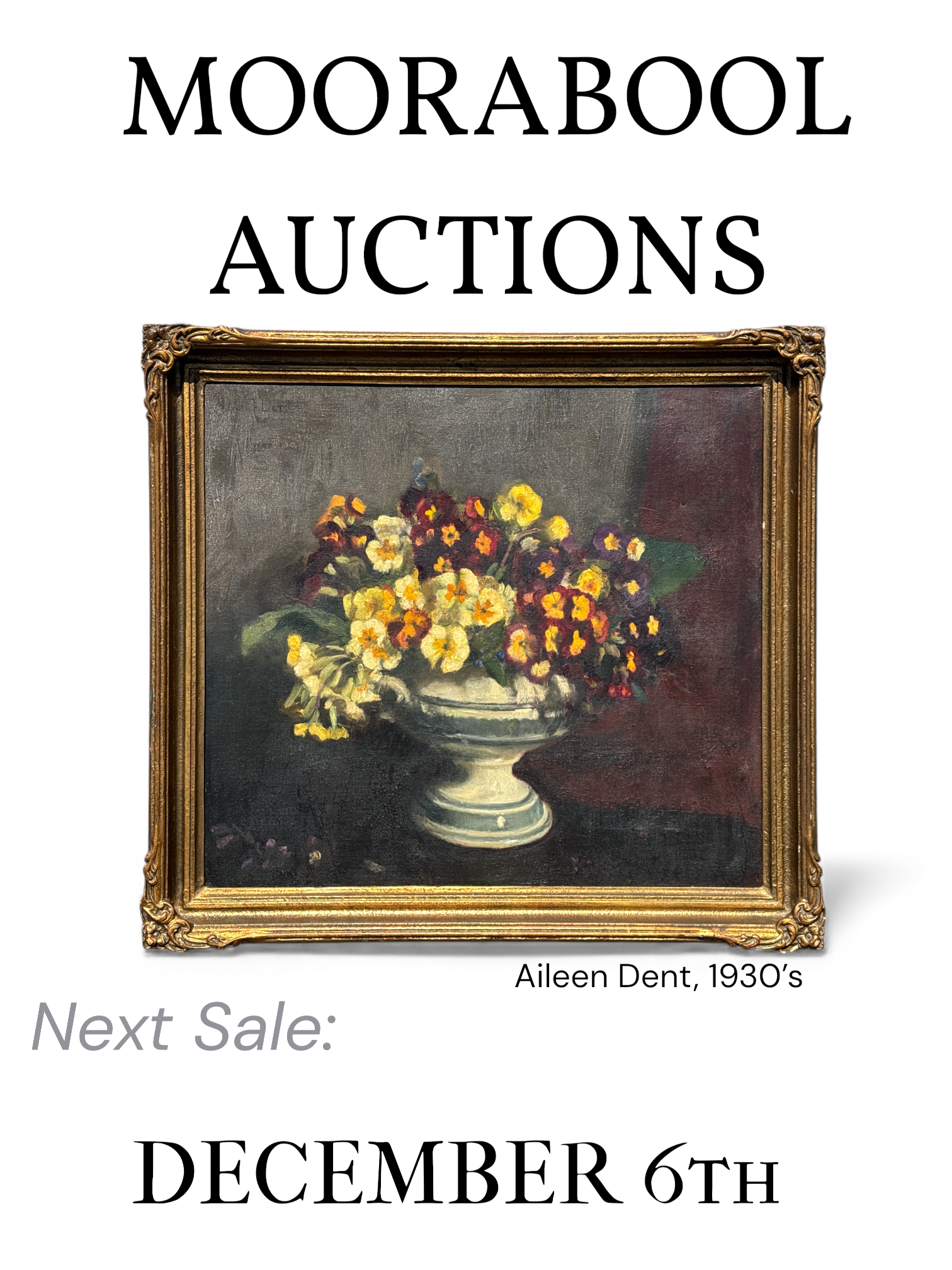We have found a number of outstanding items over the years, and many of these have left Australia for distant shores. It’s with great pleasure that we can announce the acquisition of our latest ‘Great Find’, the Sulkowski Charger, by our very local National Gallery of Victoria.

This is a large piece of porcelain, measuring 34.5cm across. It isn’t the largest from the service – there appears to be two sizes larger again – but it is an impressive piece, perfectly displaying the large & showy armorial device. It is this coat of arms that makes this so important; experts regard it as the earliest large-scale commission from the Meissen factory made for someone other than the owner of the works, Augustus II ‘The Strong’.
These arms are depicting a marriage, with the two shields beneath the crown representing each family. On the left is Count von Sulkowski (1695-1762), the high ranking court official. On the right are the arms of Baroness Maria Franziska von Stein zu Jettingen (1712-41) who he married in 1728 and had 7 children with. The production of a service such as this 8 years later is almost like a delayed wedding gift for himself; usually they are contemporary with the wedding, but remember the context: Meissen, the first producer of porcelain in Europe, was still in its infancy in the 1720’s, and we could argue that a service of such elaborate sophistication would not have been possible as the capabilities of the Meissen works were not yet experienced enough.

Alexander Joseph Graf von Sulkowski was Privy Councillor, Minister of State, and a Cabinet Minister to the King, Frederick Augustus. He was deeply involved in the Meissen factory, taking responsibility for the deliveries of porcelain to furnish the newly built ‘Porcelain Palace’ in Dresden, and also being responsible for the King’s treasure vaults in Dresden, known as the ‘Green Vaults’.

His origins & ascent to power is a tale in itself. Born to Polish gentry, rumour has it his mother fell under the spell of Augustus II ‘The Strong’, Elector of Saxony and King of Poland ( and creator of the Meissen porcelain factory!). Augustus II was known as ‘The Strong’ for his musculature, reinforced by his favourite party trick of apparently ripping iron horseshoes in half with his bare hands….. But there is another aspect to his nickname, the results of which were a debatable 354 illegitimate children!
Rumour has it that Alexander was one such child, and certainly Augustus II cared for the youth who came to the Royal Court at Warsaw in 1711 as a page. He entered the service of the crown prince, Frederick Augustus, who was one year younger, and they grew up together. He received his first title in 1712, ‘Master of the Horse’, and for the next seven years he & the Crown Prince went travelling through Italy, France, and the other German states. A couple of teenagers seeing the sights of Europe together, who can imagine what adventures they had…. certainly it would have been a bonding experience, and so Augustus was well established to rise in status in the court. He became a ‘Gentleman of the Bedchamber’ in 1726, married a court Lady-in-waiting in 1728, and became a Count in 1732. On 1st February 1733, Augustus II ‘The Strong’ died, and his heir Frederick Augustus ascended the throne. Straight away, Alexander was made Privy Councillor, Minister of State, Cabinet Minister and an Imperial Count. He also became a Count of the Holy Roman Empire. He was a Pole, and the only Pole to achieve such a lofty position in the court at that time. Like a Shakespearian play, the scene was set for his fall.

What is fascinating is that this very service has been blamed for his descent; it was so much showier & desirable than the King’s own services, and more importantly, he had not asked permission from the King – the owner of the works – before putting in his order. Certainly, he lost favour at the exact same time the pieces began to be delivered, and so Sulkowski lost his many positions of privilege & responsibility to another of Frederick Augustus’s ministers, Heinrich Graf von Brühl. Brühl takes on most of Sulkowski’s titles, including Director of the Meissen works, and straight away commissions his own grand, Baroque service – the delightful & iconic ‘Swan Service’.
The National Gallery already has a magnificent charger from Brühl’s service, and these two marvelous Meissen chargers will soon be housed together in the same cabinet – graphic depictions of a government power struggle 290 years ago that centered on Meissen, Europe’s first porcelain maker.
To be continued in Part 2…… once the charger is in place in the NGV!













 perhaps was not used much due to the issues we see on this cup & saucer: the blue tends to bead into clumps, and the thick yellow enamels shift in the heat of the enamel firings. While the yellow pigment had been a very early Sévres development, the tone seen here appears in the early 1780’s and is not repeated after the Revolution. There are a handful of specimens scattered around the globe in various collections, making this a most rare & desirable item.
perhaps was not used much due to the issues we see on this cup & saucer: the blue tends to bead into clumps, and the thick yellow enamels shift in the heat of the enamel firings. While the yellow pigment had been a very early Sévres development, the tone seen here appears in the early 1780’s and is not repeated after the Revolution. There are a handful of specimens scattered around the globe in various collections, making this a most rare & desirable item.















